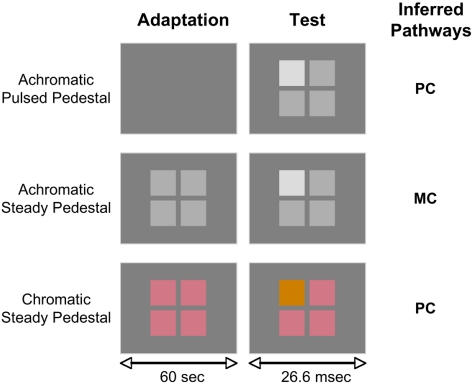Figure 1.
Stimulus paradigms for the achromatic pulsed-pedestal condition (top), achromatic steady-pedestal condition (middle), and chromatic steady-pedestal condition (bottom). All three paradigms shared the same spatial stimulus configuration. A pedestal consisting of a 2 × 2 pedestal array of four 1° squares separated by 0.06° was set within a uniform 9.2° × 8.7° rectangular surround. For each trial, one square in the pedestal array was randomly chosen as the test square, which differed in luminance or chromaticity from other squares during the stimulus presentation. The observer's task was to identify which square differed from the other three. The pedestal was either pulsed simultaneously with the test square for 26.6 ms during the trial period (pulsed-pedestal condition) or presented continuously (the steady-pedestal condition). The achromatic pulsed-pedestal condition reveals PC pathway achromatic contrast gain, the achromatic steady-pedestal condition reveals steady state MC pathway sensitivity, and the chromatic steady-pedestal condition reveals PC pathway chromatic contrast gain.

